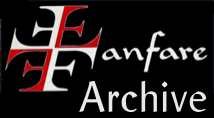Album review: Fields

Published on April 1, 2020
by Colin Clarke | Share this post!
“This disc is absolutely beautiful; the recording itself is one of the finest to come my way, the music revelatory.”
Immersive, ambient sounds are preserved in a state-of-the-art recording here. The name Devonté Hynes was completely unknown to me, but that is probably because I am hardly a clubber (he is also known variously as “Dev,” “Blood Orange,” and “Lightspeed Champion,” and from 2004 to 2006 as a member of the phenomenally named band “Test Icicles”). It’s nice to know, though, that Hynes was born in Ilford, Essex, just down the road from where this review is being written.
For this album, Hynes composed all of the music via a DAW (Digital Audio Workstation). A mix of recordings and sheet music was sent to Third Coast Percussion, and the four members thereof orchestrated the music. A dialogue ensued between Third Coast, the composer, and choreographers. The title to this review therefore might be construed as slightly misleading or limiting; the implication from the booklet is that the process was remarkably symbiotic.
Ambient, often Glass-influenced, this music has a hypnotic appeal. And for all the Glass influence, there is something about the slowly rotating sounds of the fourth movement of For All its Fury, “Wane,” that brings Stockhausen to mind (specifically but not limited to Kontakte). The spatial aspect of this music is critical: The effect was considerably enhanced when listening through top-end headphones. The fifth movement, “Curl,” operates in three locations (left, right, center) that eventually coalesce before being dismissed by the chimes that open “Hush”; the seventh movement, “Gather,” also works with spatial rotation of sound, while again it is separation that forms a vital part of the musical experience in the high-pitched “Tremble.” The mallet instrument-focused “Press” takes us into decidedly Minimalist terrain; it is superbly performed. There is a crescendo that one feels could go on forever (and possibly beyond where it actually ends); instead, a short quiet coda fades and “Fields” takes over. The composer envisioned an open field for the piece in which the music and dance could interact. Listening to the work in movement sequence, the effect is often of suddenly moving from one part of that field to another, as if the field were segmented into 11 sections (the total number of movements). For this reason, the disc itself is entitled “Fields”; this final movement is indeed sonically indicative of a vast, open space. A glassy (lower case, not Philip) melody is suspended high above the imagined field before being encased in shards of sonic diamond.
Percussion instruments utilized include vibraphone, xylophone, marimba, crotales, tuned bowls, tam tams, gongs, glass wind chimes, tuned metal pipes, and tuned wood planks, among others. The stand- alone piece Perfectly Voiceless is highly Minimalistic; it is remarkable how at one point, though, that build-up of Minimalism simply parts like a curtain. Hynes has acknowledged a love of Debussy, and there is something of a frozen Impressionist beauty to some parts of this piece.
The final piece, There Was Nothing, pits classic synthesizer against bowed mallet instruments (a really spooky sound). The booklet notes, quite correctly, bring up the name of Lou Harrison in relation to this piece. At one point the music moves in waves of sound, swaying until a rhythmic beating re-grounds the process. The sudden primal surge of sound (verging on noise) in this piece is staggeringly effective: Sound zooms from place to place, disconcertingly, against which bell-like sounds aggregate.
This disc is absolutely beautiful; the recording itself is one of the finest to come my way, the music revelatory.

